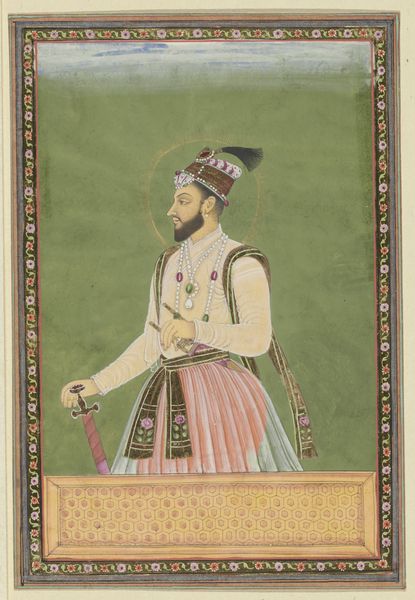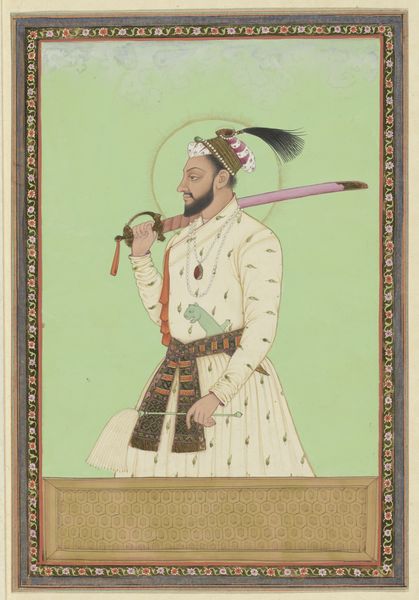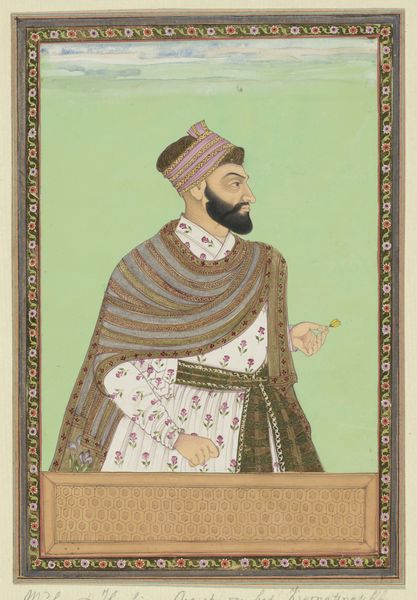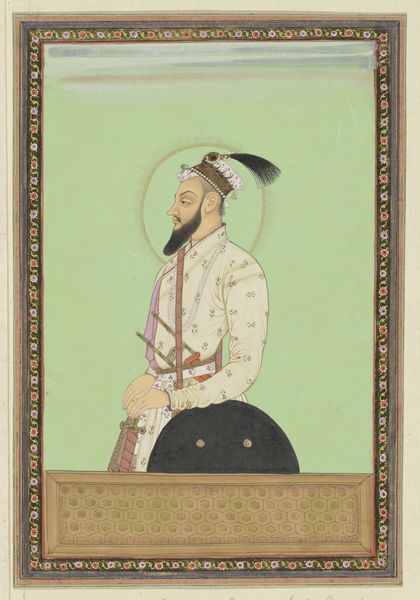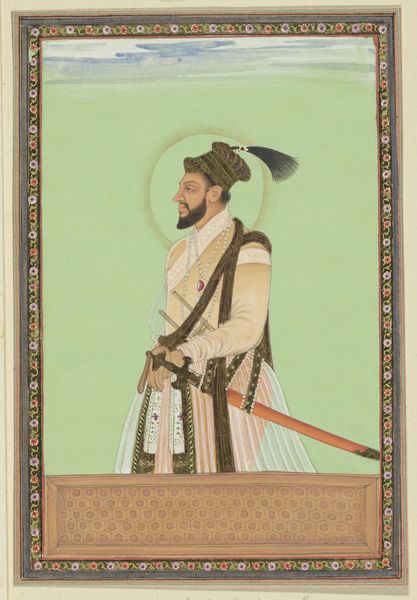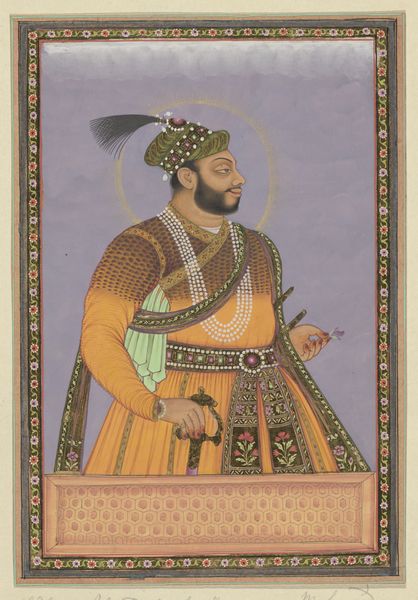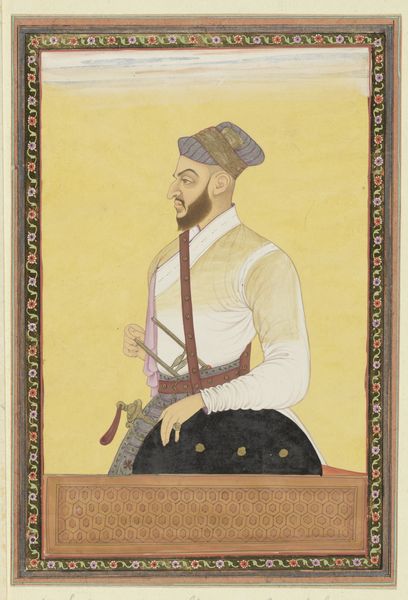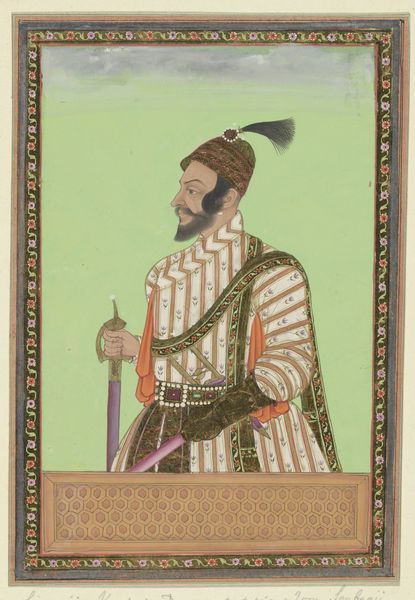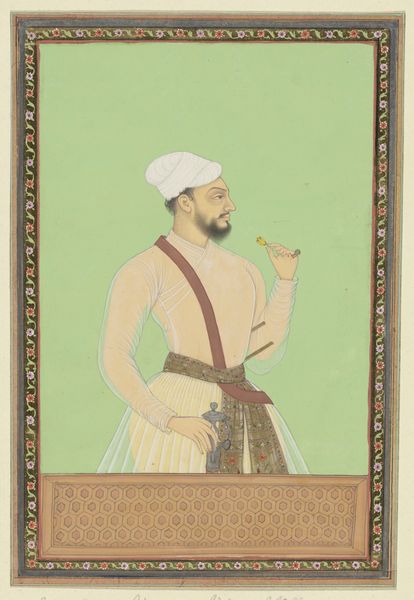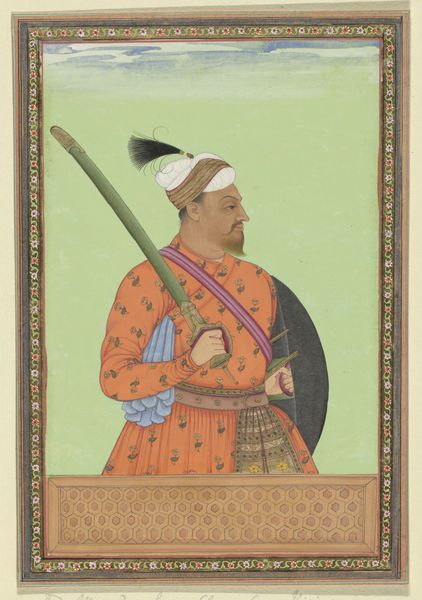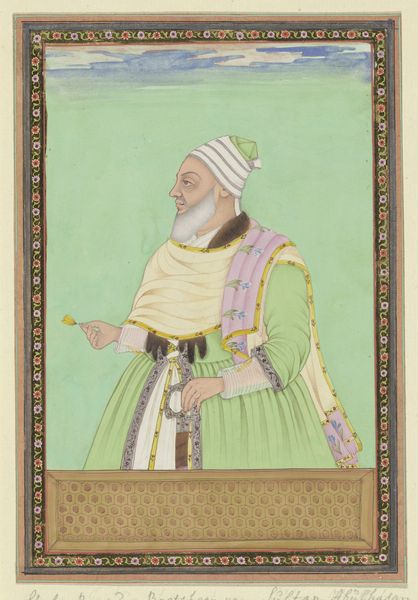
Portret van Sultanji, de oudste zoon van Aurangzeb, de schoonzoon van Sultan Abdullah; Aurangzeb heeft hem gevangen gezet en in die gevangenschap is hij ook gestorven. c. 1686
0:00
0:00
watercolor
#
portrait
#
water colours
#
narrative-art
#
asian-art
#
watercolor
#
islamic-art
#
watercolour illustration
#
miniature
Dimensions: height 203 mm, width 140 mm
Copyright: Rijks Museum: Open Domain
This portrait of Sultanji, the eldest son of Aurangzeb, was made by an anonymous artist using opaque watercolor, ink, and gold on paper. The flat application of color and fine brushwork are typical of Mughal painting. However, the materials themselves—derived from minerals and plants—required extensive labor to prepare. Sourcing the gold alone would have involved considerable trade networks and skilled craftsmanship. Notice how the artist used thin layers to build up color saturation, allowing the paper's texture to subtly influence the final appearance. The painting's luminous quality comes from the gold highlights on Sultanji's jewelry, turban, and clothing. The immense time and skill required for this type of work, together with the costly materials, speak to the economics of artistic production. The portrait not only depicts Sultanji, but also the power and wealth of the Mughal court. Paying attention to the materials and techniques employed in its creation offers deeper insight into the artistic and cultural values of the time.
Comments
No comments
Be the first to comment and join the conversation on the ultimate creative platform.
